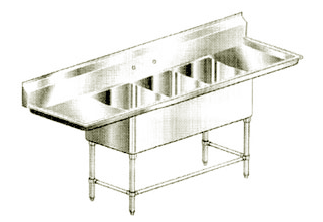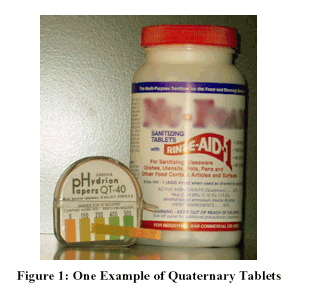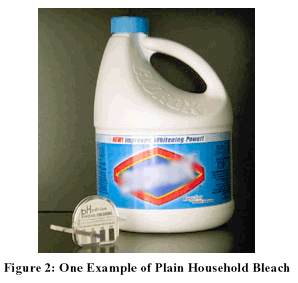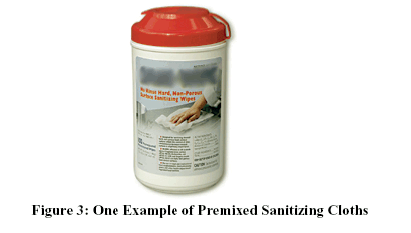
| City of Portsmouth, Health Department, 1 Junkins Avenue, Portsmouth, NH 03801. Tel: (603) 610-7273 | ||
|
Sink Requirements for Coffee and Beverage Service  You must have a three bay sink to provide coffee for service to the public. A 3-bay has two drain boards and three compartments in one continuous unit. All equipment in a facility, except the handsinks, must be NSF or UL EPH approved.  Sanitizing in addition to cleaning is important to insure that any harmful germs that survived the washing process will not be passed on to other customers. Chemical sanitizers must be mixed to the proper concentration - if they are too weak, they will not be effective in killing viruses, bacteria and molds. If they are too strong they will leave a toxic residue which contaminates food. There are only a few sanitizers approved for use in food service. These come with supporting, verifiable documentation, and are usually purchased through a distributor. There are also quaternary tablets and bleach. Quaternary tablets are sold under various names, but generally look similar to the packaging below. Quaternary compounds generally require 1-2 tablets per sink, depending on the sink size. Mix this type of sanitizer to a concentration of 200 PPM. To test your concentration, place a small amount of the fully mixed sanitizing solution in a small container and let cool to room temperature. Use a test strip made specifically for quaternary compounds as shown below. These test papers are generally orange and turn khaki-like brown when the sanitizer is at the proper concentration. Hold the paper in the sanitizer solution for 10 seconds, then compare the color change with the chart on the front of the package and adjust concentration to 200 PPM by adding either water if the color change is too dark, or more sanitizer if the color change is too light.   To be licensed to sell/serve coffee to the public as part of your food business, the minimum licensing category is "Market". Of major concern in the cleanliness of a coffee-service or other self-serve beverage dispensers are the areas the public touches to dispense the product. Buttons, handles and levers that are part of the dispensing process need to be frequently sanitized to prevent the spread of germs from one customer to another. There are many products on the market that are pre-mixed to sanitize for these purposes. One example is provided below. Spray cleaners not approved for food use should not be used because of the potential for the spray to reach food contact surfaces that could then contaminate the beverage.  The licensing category for this type of equipment is "Prepack". return |
|
|||||||||||||||||
